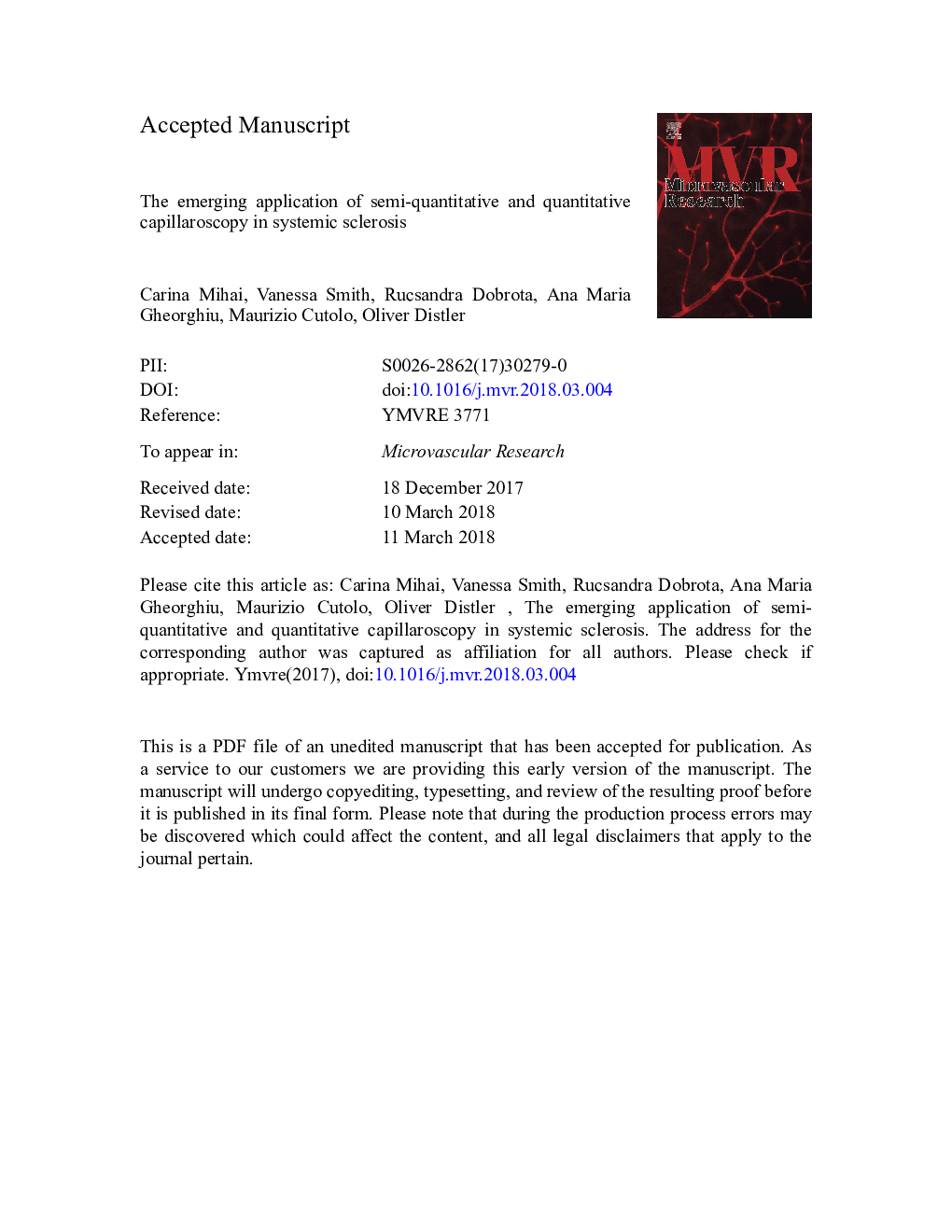| Article ID | Journal | Published Year | Pages | File Type |
|---|---|---|---|---|
| 8340875 | Microvascular Research | 2018 | 23 Pages |
Abstract
Systemic sclerosis (SSc) is a connective tissue disease with high morbidity and mortality, characterized by autoimmunity, obliterative vasculopathy involving mainly the microvasculature, and fibrosis. SSc-specific nailfold capillaroscopic changes have been defined, and nailfold capillaroscopy (NFC) is now unequivocally accepted to be a cornerstone for the early diagnosis of SSc. However, the use of NFC in patients already diagnosed with SSc is still not standardized. Several studies have shown that NFC abnormalities correlate with disease activity and severity and are predictive for disease worsening, such as occurrence of new digital ulcers. More importantly, successful treatment has been shown to diminish NFC abnormalities in severe SSc cases. These findings support the importance of NFC in monitoring patients with SSc and even its role as an outcome measure in SSc clinical trials. It is a matter of debate if Semi-quantitative and Quantitative NFC would be a more sensitive tool than qualitative NFC for meeting these objectives. This review is presenting the emerging application of Semi-quantitative and Quantitative NFC in SSc and its potential benefits.
Related Topics
Life Sciences
Biochemistry, Genetics and Molecular Biology
Biochemistry
Authors
Carina Mihai, Vanessa Smith, Rucsandra Dobrota, Ana Maria Gheorghiu, Maurizio Cutolo, Oliver Distler,
